Have you ever flushed a toilet or turned on a sink and wondered to yourself, where DOES the water go once it has disappeared from sight?
 Well, the instructors at High Trails Outdoor Science School were wondering the same thing, so they loaded up into their magical Subaru school busses and headed to the Big Bear Area Regional Water Agency (BBARWA) for a firsthand look at where our water goes when we flush it down the drain.
Well, the instructors at High Trails Outdoor Science School were wondering the same thing, so they loaded up into their magical Subaru school busses and headed to the Big Bear Area Regional Water Agency (BBARWA) for a firsthand look at where our water goes when we flush it down the drain.
First up, Headworks
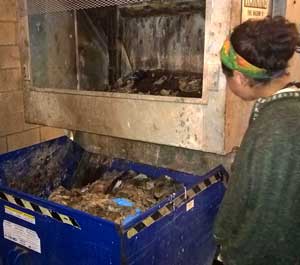 The water treatment at BBARWA is made up of 3 main sections. Heaadworks is the raw sewage that comes down the drain heads into a filtration system that takes out the big stuff: anything larger than 1 ½ inches gets pulled out of the mix. This could be anything from trash to “rags” (toilet paper). They pull out a lot of things that you wouldn’t expect as well, from children’s toys to a pair of dentures.
The water treatment at BBARWA is made up of 3 main sections. Heaadworks is the raw sewage that comes down the drain heads into a filtration system that takes out the big stuff: anything larger than 1 ½ inches gets pulled out of the mix. This could be anything from trash to “rags” (toilet paper). They pull out a lot of things that you wouldn’t expect as well, from children’s toys to a pair of dentures.
Rag Bin = Toilet Paper.
This was by far the stinkiest room in the entire plant, but the building wasn’t even registering a single part per million (PPM) of particles in the air. (The particles in the air are what your nose picks up, and depending on the smell, your nose can pick up trace amounts (parts per trillion or PPT) of the particles in the air.) Many instructors couldn’t handle the trace amounts of smell that our noses were picking up -the smell was so strong- and had to exit the building, but our guide just giggled at us and suggested we imagined what it smelled like in that room when the building was registering 4 or 6 or even 11 PPM.
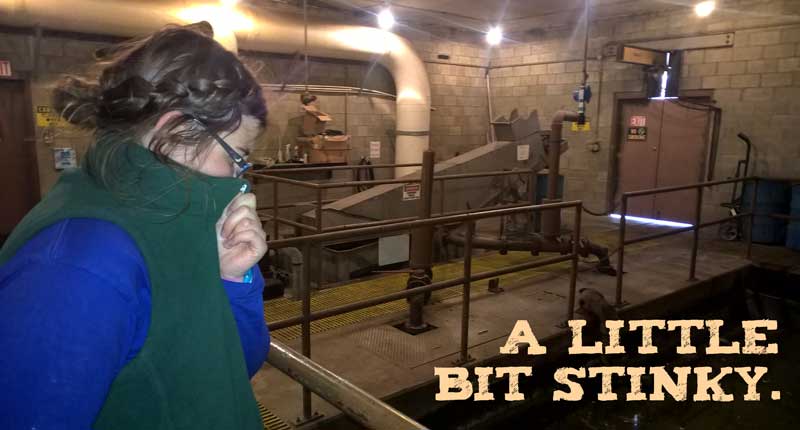
Second Stop…Oxidation Ditches!
Once the big stuff has been pulled out, the water goes off to the “oxidation” ditches. This is where the real magic, or more accurately science, happens. Thousands of little bugs that live at BBARWA are fed during the oxidation cycle. The water that comes in is agitated to put the oxygen these little heroes need to eat up all the ammonia and nitrate in the water. This water goes through one more screen to pull out any more trash and rags that might have made it through the first filtration.
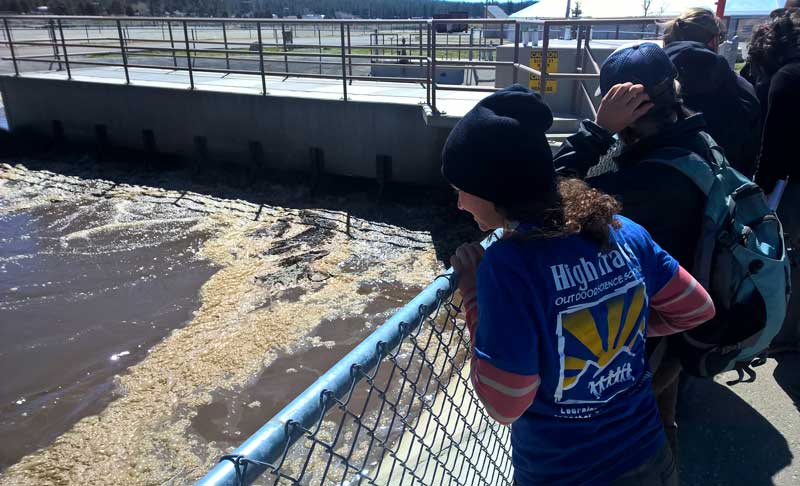
Thirdly, the Clarifiers
From the oxidation ditches, the water heads over to the “clarifiers.” After the loud, exciting, churning of water in the oxidation ditches, the clarifiers are surprisingly calm. But that is absolutely necessary. The clarifiers allow the water to settle down, which in turn allows the solids to settle out to the bottom of the clarifiers. The clean water on top circulates around which pulls out the floating solids, such as grease. The water, solids, and grease in the clarifiers separate here for about 24 hours before being pumped off to its final destinations.
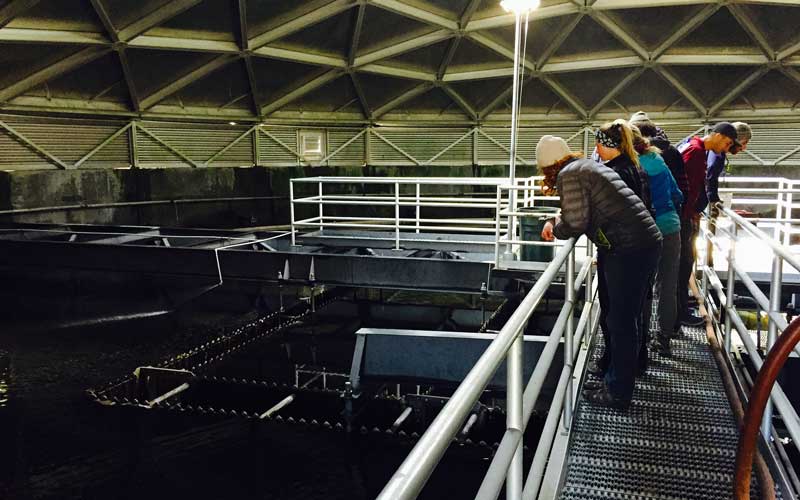
Where do Grease, Solids, and Water Go?
Grease: gets scooped off and shipped to a hazardous waste facility, along with any hair that has washed down the drain as well.
Solids: get pumped to one of two places.
The first is an experimental “Cannibal Pit” where any bugs that are left in the solids eat one another until the solids have decreased enough to move.
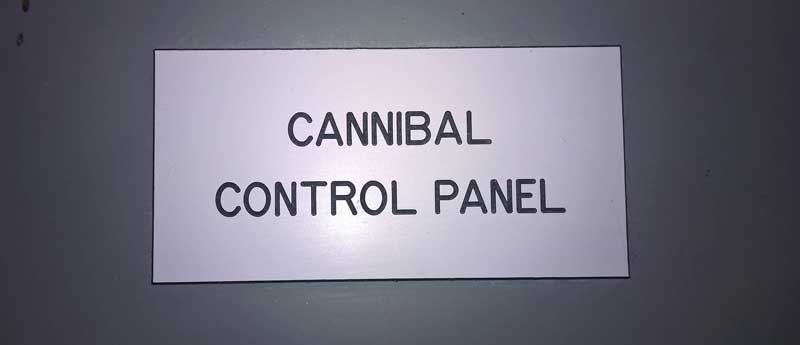
Yes, this is the real sign.
Or the solids head towards a repurposed paper press which presses a good amount of the water out of the solids. Those solids then both head towards a covered drying bed with a heated floor. The heat from the floor evaporates any remaining water out of the solids, which are then shipped to a landscape compost facility in Redlands to make Humanure! (Yes…it’s what you think it is.) 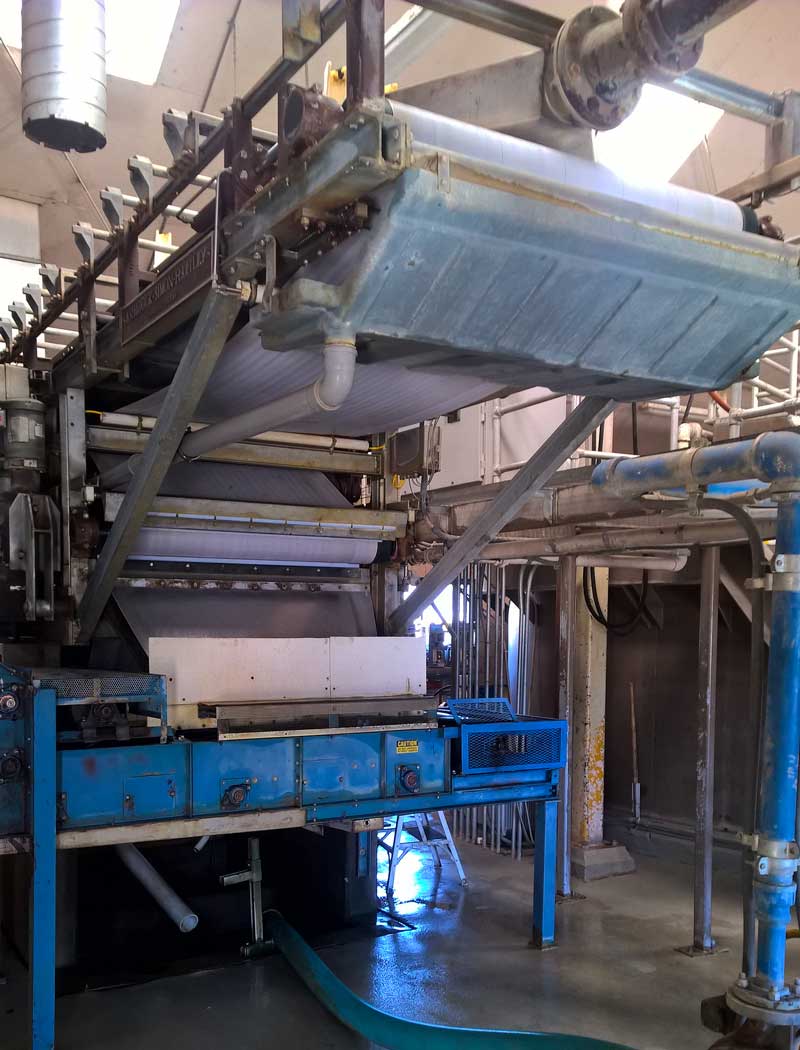
Water: gets pumped into ponds where the water sits before being pumped to a farmer in Lucerne Valley. This water still has too many contaminants to be used as drinking water, so the farmer instead uses this water to grow “fodder” crops. (Think any crop that is used primarily for animal feed, such as hay or alfalfa).
This BBARWA water is so full of nutrients that the farmer gets 3 to 4 more cuttings of his crops per year than many other farmers who grow the same crops.
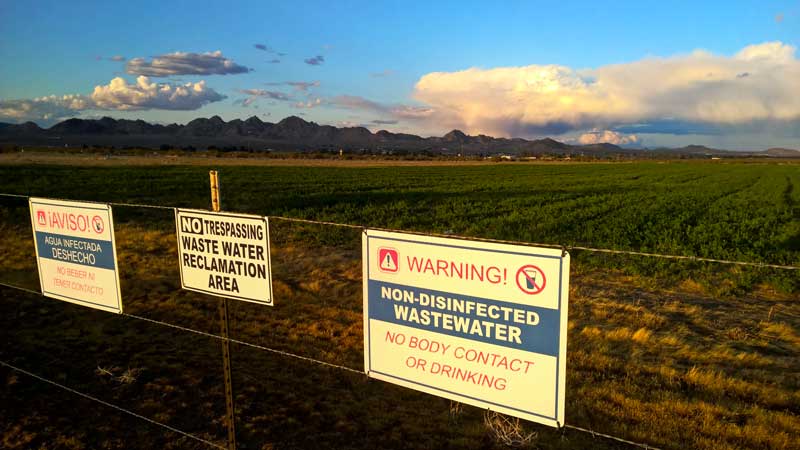 The water then percolates down through the sandy soil that makes up Lucerne Valley, where it rejoins the water cycle, but in a different watershed than where that water came from in the first place. This is unusual – most water that is treated is sent to a place where it can rejoin the same watershed, but due to the perfect soil in Lucerne, BBARWA gets to take the water from the Santa Ana watershed and return it to the Mojave watershed.
The water then percolates down through the sandy soil that makes up Lucerne Valley, where it rejoins the water cycle, but in a different watershed than where that water came from in the first place. This is unusual – most water that is treated is sent to a place where it can rejoin the same watershed, but due to the perfect soil in Lucerne, BBARWA gets to take the water from the Santa Ana watershed and return it to the Mojave watershed.
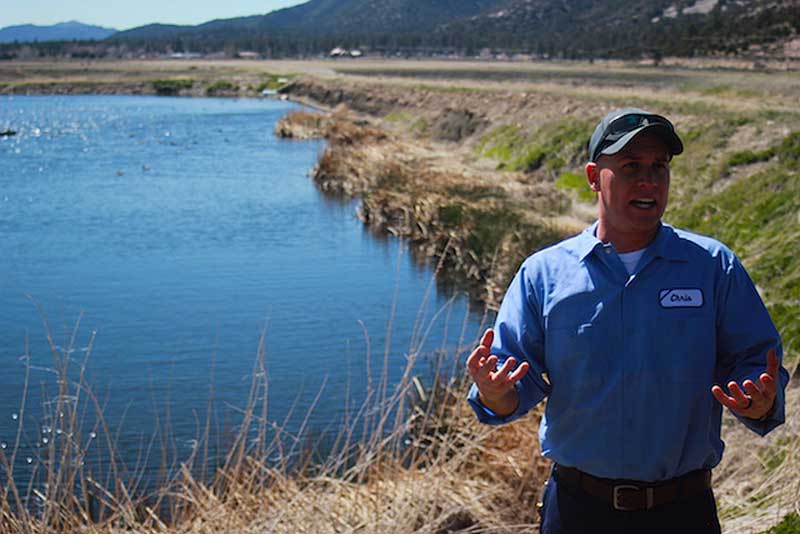 We were surprised that the water from the plant wasn’t treated to the tertiary level, or drinking water level, and then returned to the ever shrinking Big Bear Lake. However, we were told that plans were drawn up to do so, but the amount of water that flows through BBARWA (around 770 million gallons during peak flow, 680 million gallons while currently in the drought) was not enough to cover ½ of the water that evaporates from the lake daily. Even the ski resorts, who pull about 150 million gallons of water from the lake every winter to make snow, don’t even touch a portion of the water that is lost during daily evaporation.
We were surprised that the water from the plant wasn’t treated to the tertiary level, or drinking water level, and then returned to the ever shrinking Big Bear Lake. However, we were told that plans were drawn up to do so, but the amount of water that flows through BBARWA (around 770 million gallons during peak flow, 680 million gallons while currently in the drought) was not enough to cover ½ of the water that evaporates from the lake daily. Even the ski resorts, who pull about 150 million gallons of water from the lake every winter to make snow, don’t even touch a portion of the water that is lost during daily evaporation.
Wait – more water evaporates off Big Bear Lake everyday than is processed at BBARWA!
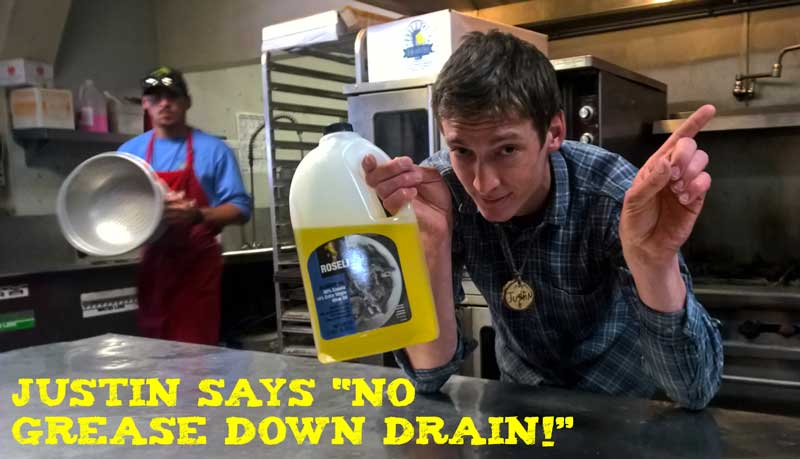
At the end of the day, there are really only three things that the hard working engineers at BBARWA wished you knew about their operation.
- First: Be aware of the things you put down the drain. Grease is expensive and difficult to dispose of, coffee grounds work like sandpaper down the pipes, and wrappers from feminine hygiene products clog up the system. Just because it will fit down the pipe, doesn’t mean you should flush it down the drain.
- Second: Be water conscious. California is in a drought, and the water we flush down the drain doesn’t get returned to our watershed. Every gallon flushed is a gallon we won’t see again.
- Third: Properly dispose of pharmaceuticals. Most waste water treatment plants cannot effectively eliminate pharmaceuticals from the water, which is then returned into the watershed. While many of the effects of this buildup of pharmaceuticals in the environment are of yet unknown, studies have shown that it could be the reason for feminization of male fish, and reduced appetite and sluggishness of other wildlife. Currently, incineration is the best known way to dispose of pharmaceuticals.

Now I know what you are wondering, why did the employees of High Trails take a perfectly good Friday to tour a waste water treatment plant? As educators, we are also learners. It is important for us as educators of the world around us, to know as much as we can about the different parts of life, so we can impart that knowledge on the students who visit our sites weekly. By visiting BBARWA, we were able to get an insider’s look into where our water goes after we flush it away, which in turn gets us excited to add in new facts, figures, and outlooks to a process that most people take for granted.
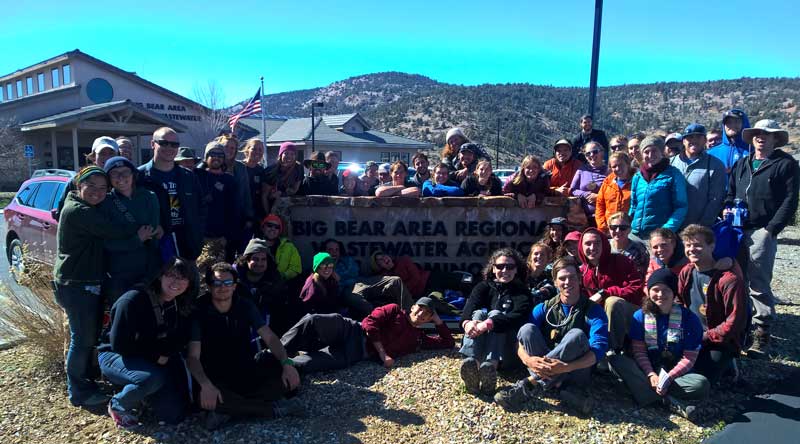
At High Trails Outdoor Science School, we literally force our instructors to write about elementary outdoor education, teaching outside, learning outside, our dirty classroom (the forest…gosh), environmental science, outdoor science, and all other tree hugging student and kid loving things that keep us engaged, passionate, driven, loving our job, digging our life, and spreading the word to anyone whose attention we can hold for long enough to actually make it through reading this entire sentence. Whew…. www.dirtyclassroom.com

Comments are closed.